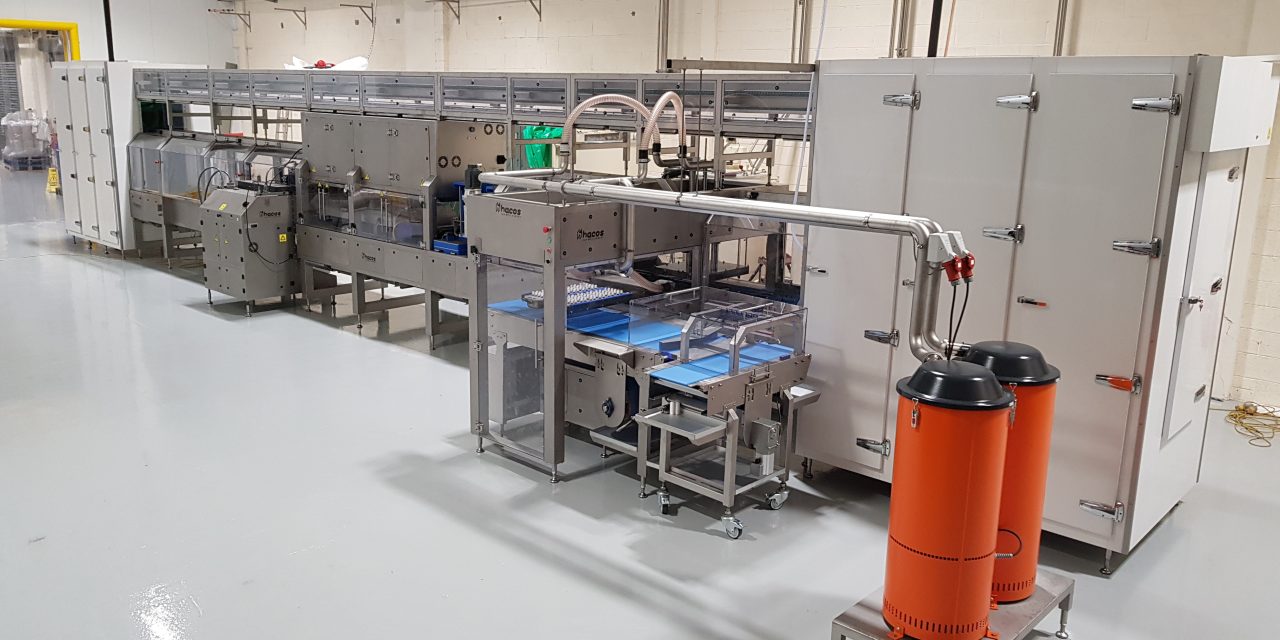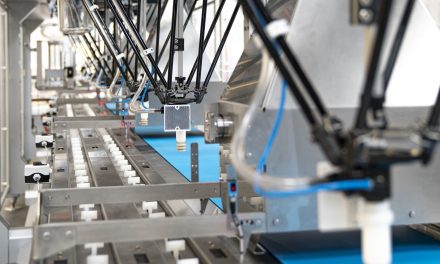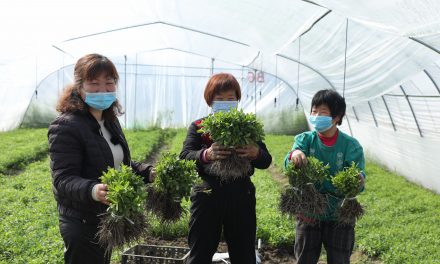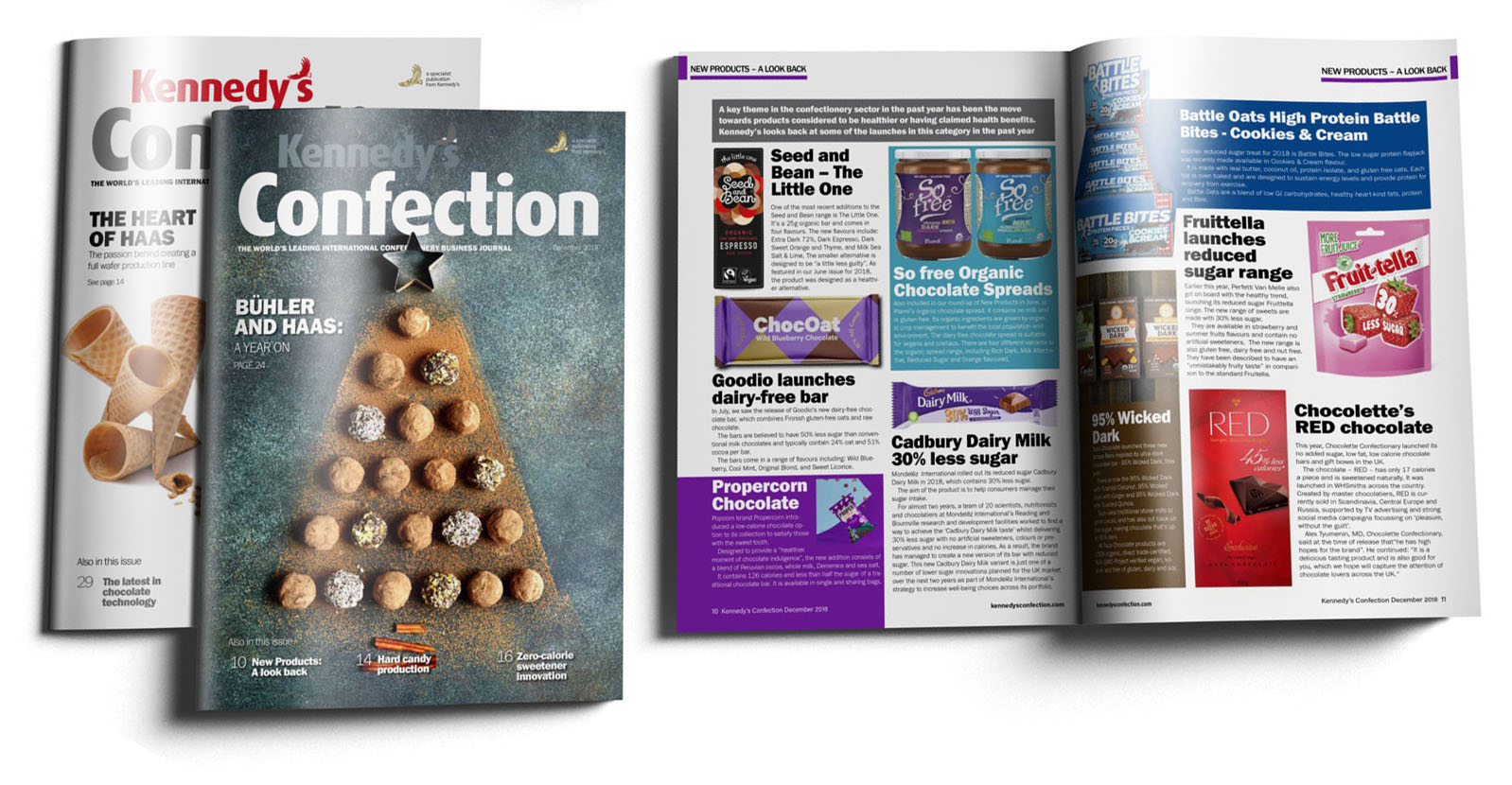Suzanne Callander reports on how chocolate production processes are being affected by fast-changing consumer demands.
While many players in the cocoa processing business will freely refer to themselves as being conservative, there has in fact been significant processing development in recent years. For example, capacity improvements on the presses, the alkalising process and also roasting innovations.
The ongoing consumer demand for ‘all natural’ products is also having an effect on cocoa processing lines, according to Roy Smith, manager technology at Royal Duyvis Wiener. “For the first time in our recollection the alkalisation process is under debate with conversations now taking place about whether alkalising agents are considered to be natural. Is dutched (alkalised) cocoa stepping away from what consumers expect from their all-natural chocolate or compound food or beverage?”
Dutching
After harvesting, cocoa beans are fermented, roasted and crushed into cocoa nibs. The next step is to grind and press the nibs to separate the cocoa butter from the cocoa mass. After grinding, the cocoa mass is pressed, and the fatty components flow out in the form of liquid cocoa butter. What’s left is a cocoa powder mass.
The alkalisation step was invented in the 19th century by a Dutchman called Coenraad van Houten, which it why the process is so often still referred to as ‘Dutching’. It is a chemical process which treats the cocoa powder mass with an alkaline solution such as potassium or sodium carbonate to neutralise the acidity of the cocoa and reduce the naturally bitter taste of cocoa powder. It also has the effect of improving the solubility of cocoa powder.
So, the alkalising process is undertaken to improve the flavour and colour of cocoa powder, but in some instances chocolate-only natural mass is used to produce chocolate and if cocoa powder is used in chocolate, it is also available in the form of natural (non-alkalised) cocoa powder.
“Despite the shadow that is being cast on the alkalising process, the machine itself has improved significantly in recent years, with innovation being focused on the flow of the product,” says Roy. “Allowing the alkalising agent to smoothly mix with the cocoa nibs before roasting. Mixed gently, yet efficiently to ensure that every nib particle is touched is a process that will work whichever agents are used in the process – alkali or a cleaner label alternative.”
As in other sectors of the confectionery market, sustainability is now a key topic in the cocoa processing sector. “Royal Duyvis Wiener is focused on this need and we expect smart sustainable solutions to continue to drive innovation in the cocoa processing sector in the coming years,” explains Roy. “For example, in our drum roaster we have created a solution that reuses heat that would otherwise leave the factory via the exhaust.”
I went on to ask Roy what, in his view, is the most important stage of cocoa processing and why? “When push comes to shove it’s all about flavours in our business,” he says. “Cocoa processing is just the first step of many that goes towards creating the end product that we all love – chocolate in any and every shape or form.
“It is the origin of the bean that gives chocolate its taste DNA, a good fermentation process opens the door to taste development, but it is the roasting operation that really brings the flavour to life.
“Roasting is a really critical process step for full flavour development. Amadori compounds, formed during the fermentation process, develop into cocoa aroma under high temperatures.” Each chocolatier will have their own unique roasting profile to ensure they get the right flavour every time. “These profiles are controlled by conduction or convection heating and determining the precise roasting profiles to achieve a specific flavour is a returning topic of conversation in our technology centre, it’s all about the right structure, the right volume and above all flavour,” continues Roy.
Discussing the changing trends within the chocolate sector, Roy points to the fact that the
origin of cocoa beans has, in recent years, become a unique selling point for chocolate. “Strengthened by the demand for 100% original we see cocoa processing shifting to the country of origin. An increase of origin specific production of course requires shorter batches and shorter production runs. Even though the trend towards smaller batches of different products started pre-pandemic, shifting gears and stepping away from the ‘yield mindset’ is a post-pandemic novelty.
“Post-pandemic we are seeing the consumer demand for ‘clean labels’ and ‘all natural’ products growing at an even faster pace than before the pandemic. In cocoa processing in particular, as I have already mentioned, this relates to the use of alkalising agents…but these alkalising agents do play a key role in developing flavour so it is an interesting conundrum and we are sure that the search for all natural, clean label alternatives for alkalising agents will continue.”
Control advances
Moving further down the chocolate processing production line, the most important developments in recent years, relating to conches and refining machines, have centred around advances in process control, according to Mauro Valentini, Cocoa and Chocolate Engineering Manager at SACMI Packaging & Chocolate. Today these important steps in chocolate production are fitted with smart sensors which can relay a host of processing data that helps ensure a consistent and repeatable quality product quality.
The main outcome of advanced process control – especially during the initial stages of chocolate preparation, refining and conching – is homogeneous efficiency and quality, regardless of upstream supplies of raw materials and the intrinsic variations in their characteristics. “It is important to remember that chocolate is a ‘living’ product, made from raw materials with somewhat variable characteristics and it has traditionally been a challenge to ensure repeatability of product quality due to the variability of these raw materials,” says Mauro.
“Roasting is a really critical process step for full flavour development. Amadori compounds, formed during the fermentation process, develop into cocoa aroma under high temperatures”
I ask Mauro how it is possible to achieve greater continuity of the finished product given the challenges presented by the variability of raw materials. He answers: “First of all continuity can be achieved by accurately controlling the conditions and quantities of the raw materials – both liquid and powder – that are fed into the mixer. One of our most interesting solutions is an automatic system that monitors the granulometry of the chocolate exiting the refiner. Simple and linear, this system continuously monitors all the relevant parameters. In turn, the incoming data is used to adjust the machine, creating a feedback loop that ensures the required product refinement is maintained at all times.”
Having greater control of the process also offers an opportunity to ensure efficiency and process repeatability when employing new ingredients such as sugar substitutes, fats and the various other ingredients that, alongside the chocolate itself, go into the increasingly complex recipes that are now being demanded by consumers.
“Having accurate control of the refining process helps ensure consistency of particle size, ready to be passed on to the subsequent conching stage,” continued Mauro.
Many equipment providers today, including SACMI Packaging & Chocolate are also putting a focus on the need for greater energy efficiency in the chocolate production process. Keep an eye out for power management solutions such as inverter-controlled motor drive systems. “Our process R&D department has developed an energy saving system for our 5-roll refiners,” explains Mauro. “The use of inverters to drive the two main machine motors provides energy savings by re-using the braking power generated by the first roller motor during routine operation.”
Better process control is just as essential to ensure repeatable product quality when it comes to the downstream conching lines and this has been addressed by SACMI Packaging & Chocolate on both its single-shaft and dual stirrer conching solutions which now offer the ability to monitor a series of process parameters, the most important of which are temperature and the power transmitted to the product during all conching phases.
Keeping it clean
Raf Tuytelaars, Sales and Marketing Manager at Hacos, says that while chocolate production equipment has seen many technology advances over the years, he believes that one of the most important considerations has really not changed that much – the need for hygienic design.
While there may be a cost premium for buying a piece of equipment that has been engineered to be hygienic – for example, to resist the build-up of contamination and to make cleaning fast and easy between different production batches – the reductions in downtimes for cleaning, in addition to reduced water and detergent consumption and energy required for cleaning, will more than justify the additional purchase price.
“Today our chocolate producing customers are calling for more flexibility in their machines and of course the biggest element of this is a need for rapid changeovers between batches. Hygienically-designed equipment will always be quicker to cleandown and so can offer huge benefits for those looking for rapid turnarounds between batches. Hygienic design equals easy cleaning which equals faster turnarounds,” says Raf.
He went on to highlight that consumer demand for new and more interesting chocolate, and of course the demand for healthier and ‘free from’ offerings, has fuelled the need for chocolatiers to offer ever-wider product ranges which is really driving the need for faster turnarounds between batches – all the time that equipment is not producing it is costing the business money!
“We have seen how consumer trends have affected batch sizes,” says Raf. “It started with the trend towards single origin chocolate, which required a visual hygienic clean between batches, but this is really just the tip of the iceberg when you consider that there is also a growing demand for ‘free from’ products too, which requires a much more stringent, thorough clean to be undertaken between batches if the same line is going to be used for both traditional and ‘free from’ products – so cleanability today is an even more important consideration than it may have been in the past.”
Raf points out that the demand for a wider variety of chocolate products has offered opportunities for new companies to enter into the specialty chocolate market sector. “The volumes for sugar-free, vegan, plant-based and ‘free from’ products are still less than for traditional chocolate – and we are also seeing this as driving demand for smaller, flexible automated machines,” he says.
Another emerging trend that has been identified by Hacos is the need for equipment that is able to handle an ever-wider variety of inclusions in chocolate. “This demands more flexible equipment solutions and some creativity,” says Raf. “For example, we have been working with one customer who wants to add marshmallows. However, marshmallow inclusions can vary widely – depending on the sugar content and whether it is a vegan product or not – marshmallow will behave very differently, depending on its ingredients so we need to really understand all the aspects of an application before suggesting the best solution. Of course, many of our customers want their products to stand out from the crowd and want to create something special and different, so it is vital that we work collaboratively to find the right combination of solutions to configure a solution to meet each customer’s very particular requirements.”
To wrap up, it would appear that the conservative chocolate processing sector – all the way from bean to bar – is being affected in some way by consumer demands for more variety from their chocolate products. Batch sizes are shrinking but volumes are not, so chocolate producers need to be looking for equipment that offers ever faster changeover times between batches in order to avoid unnecessary equipment downtimes.
New processing method produces fruitier, more ‘flowery’ dark chocolate
Researchers reporting in ACS’ Journal of Agricultural and Food Chemistry have identified that an alternative processing step called ‘moist incubation’ results in a fruitier dark chocolate than the conventional fermentation process.
After harvesting, cocoa beans are traditionally covered in banana leaves and left for a few days to ferment. During this time microbes in the environment degrade the pulp surrounding the beans, heating and acidifying them. This causes biochemical changes in the beans that reduce bitterness and astringency, while developing the flavours and aromas associated with chocolate.
Scientists have developed an alternative, non-microbial approach called moist incubation, in which dried, unfermented cocoa nibs are rehydrated in an acidic solution, heated for 72 hours and then re-dried. The method, which is says to be faster and more easily controlled than fermentation, produced similar aromas in beans as fermentation, with some differences.
The researchers made chocolate bars using moist incubated or fermented dried cocoa beans, as well as unfermented beans as a control. Sensory panellists say the moist incubated sample had higher intensities of fruity, flowery, malty and caramel-like aromas, whereas the fermented one had higher roasty aroma notes, and the bar made from unfermented beans had a primarily green aroma. The panellists rated the moist incubated sample as the sweetest-tasting, while the unfermented chocolate was the most bitter and astringent.
Editorial contacts:
Features Editor: Suzanne Callander scallander@kennedys.co.uk
Editor: Kiran Grewal kgrewal@kennedys.co.uk







